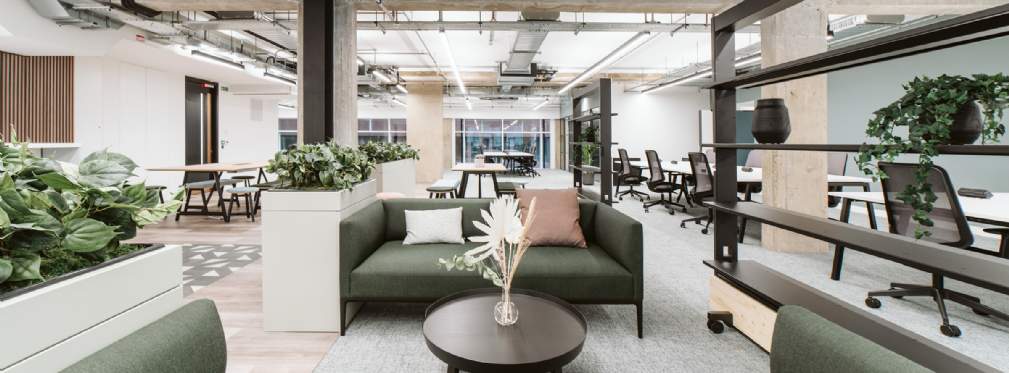Talk of UK office occupier trends this year has largely focused on one theme: how tenants are undertaking a ‘flight to quality’ and that the market has become polarised between ‘quality’ space, which continues to be in demand, and everything else. But what’s actually meant by ‘quality’?
‘Quality’ space post-Covid-19 isn’t so different to what it was pre-Covid: it’s space that’s well-connected, has lots of amenities, and high ESG and wellness credentials (the latter has perhaps been prioritised post-pandemic, but was already in demand before).
What has changed is that we’re now seeing significantly more demand for space that’s ready to go: post-Covid-19 tenants have less time for fitting out, which requires resource and often a prohibitive level of capital expenditure. We’re also seeing more demand for lease flexibility. Both these trends are typical after a downturn, but the market has moved quickly post Covid-19 and the quality of the fit-out demanded is now much higher.
Fully fitted office space was, until relatively recently, provided primarily by the serviced office sector, but before the pandemic landlords began to focus on this market and compete by speculatively fitting out spaces, typically sub-5,000 sq ft. Some even launched their own serviced office businesses, branding their fitted products to differentiate themselves from the competition: Storey, by British Land and Myo by LandSec, for instance.
But as the amount of fitted out options have increased there’s some confusion on product. For example how does “serviced” space compare to “managed”, and how does “fully fitted” compare to “Cat A+”? And what is “plug & play”?
It’s therefore worth reminding ourselves of the different terms, as descriptions have become somewhat muddled.
In the UK we tend to have:
Traditional office space:
- Shell & Core: the bare minimum - structural ceiling, walls, flooring and the Core
- Shell & Floor: as above, plus a metal raised floor for presentation purposes
- Category A: now beginning to resemble an empty office space, this includes M&E installed (exposed or with a suspended ceiling), lighting, flooring and WCs
Fitted office space:
- Category B: is a fully-fitted office with meeting rooms, furniture, IT, kitchens and break-out areas, like Category A Plus but – importantly – it’s designed, installed, paid for and owned by the tenant, so it’s bespoke
- Category A Plus: somewhere between Category A and Category B (perhaps better described as Category B “minus”) Category A Plus usually involves between 80%-90% of the space being given a Category B fit-out, but this is undertaken speculatively by a landlord looking to attract tenants. The remaining fallow space is left for a tenant to adapt to their specific requirements, in theory addressing capital expenditure issues and the hassle factor
- Fully Fitted or Plug & Play: effectively this is the same fit-out as a Category B, but is offered either speculatively by a landlord, or as surplus tenant-released space (i.e. it’s space that was originally a bespoke fit-out for a specific tenant, but is now being sub-let)
Serviced offices:
- Hot-Desking: not a fit-out, but a system; some or all desks in an office or co-working space are available for anybody to use as requested, allowing teams to move around, encouraging collaborative working.
- Co-Working: A co-working space is similar to a serviced office but comprises a shared working environment. It’s typically open-plan and offers either hot-desks or dedicated desks for members alongside shared access to meeting facilities, break-out areas, and often some office equipment, such as printers.
- Serviced: A serviced office provides a mixture of private office suites with furniture, ready to occupy almost immediately. There is access to shared kitchens and communal break-out areas, as well as meeting rooms and other amenities. All costs are rolled into a single monthly bill that includes everything from cleaning to the rent. The suites are usually available from one month, but typically contracts are 12 months.
- Managed or Enterprise: A managed office is usually a self-contained whole floor. The space will benefit from its own meeting rooms, kitchens and break-out areas; often this can be fitted to a tenant’s more specific requirements.
Further information
What do you do with London’s Grade B space?


(1).jpg)

.jpg)



.jpg)

